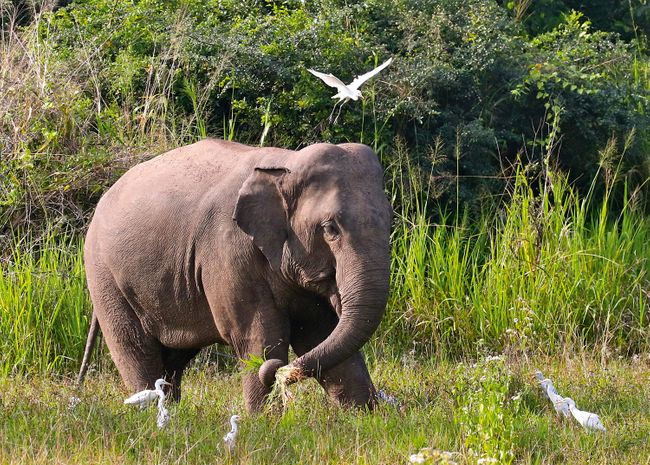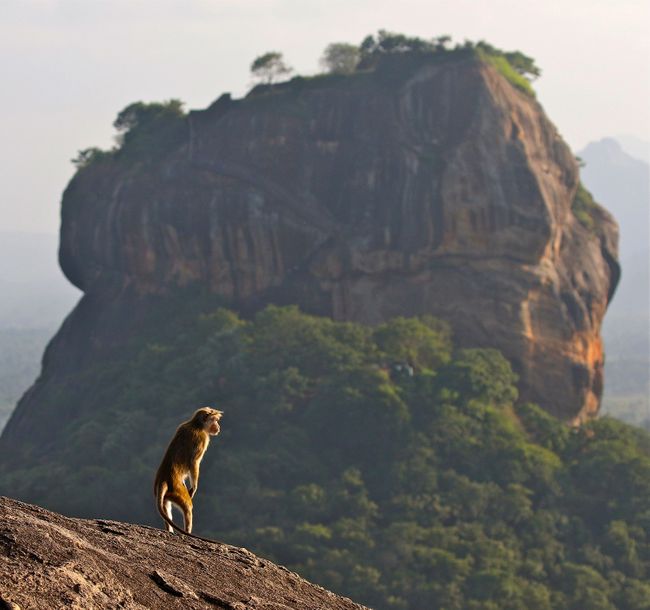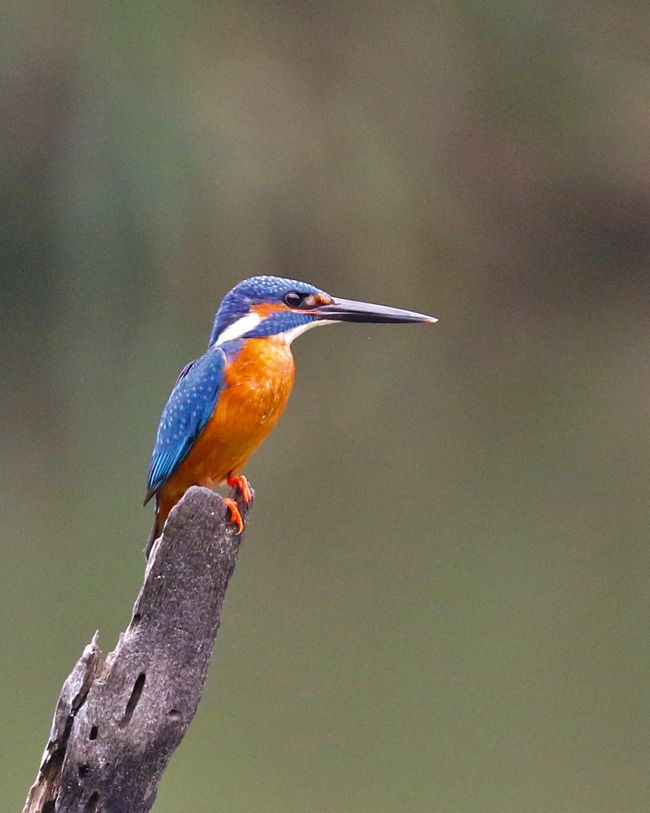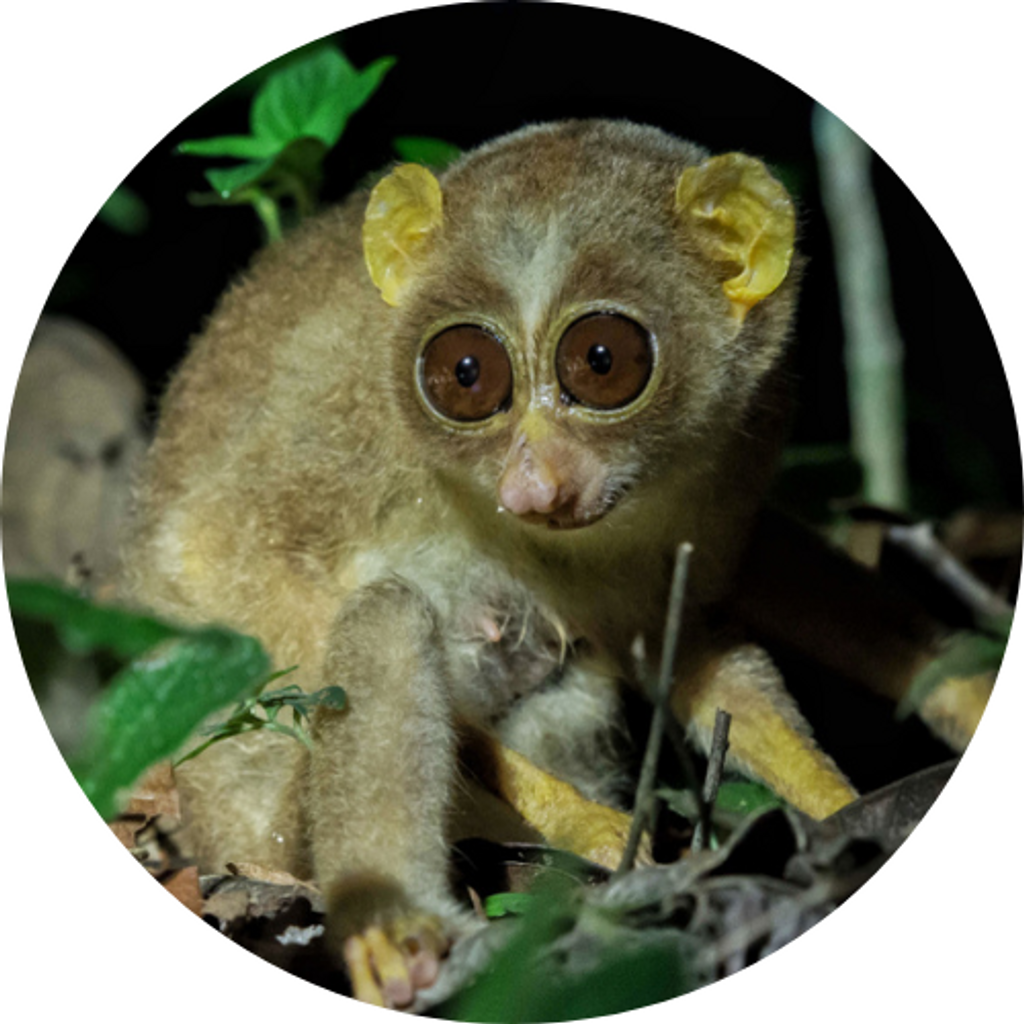Sri Lanka’s return to the wild
Posted on February 20th, 2023
Mike Unwin Courtesy https://www.wanderlust.co.uk/
Since Sri Lanka’s Jetwing Vil Uyana resort opened, its rewilded lands have lured native birds and animals back to the area, offering guests front-row seats…
As early evening arrives in central Sri Lanka, I find myself searching a dark forest for a small animal. The idea is to sweep the beam of my headtorch across the foliage to catch its reflected eyeshine. In truth, my focus is as much on avoiding the snaking roots along the trail. There!” I hiss, spotting a twinkle in the dark tangle. Fireflies,” says my more experienced companion. We move on.
Naturalist Chaminda Jayasekara has trodden this trail hundreds of times, so it’s hardly surprising that he’s seeing wildlife at every turn. First up: an Asian palm civet scuttling through the canopy; then a roosting Indian pitta on its perch, puffed up into an exquisite ball. Next, he spies a green vine snake suspended like a noose from – gratifyingly – a vine, its head mimicking a flower bud.
Chaminda soon spots what we’re looking for. I peer down his torch beam, its glare softened by a red filter, and see two saucer eyes staring back. Binoculars reveal a small, furry, squirrel-sized animal peering at us suspiciously from a tree fork. I make out skinny limbs, a tailless rear and dexterous little fingers, in which it clutches a struggling cicada. Bingo! A grey slender loris.

The Sri Lankan elephant is the largest of three subspecies of Asian elephant (Mike Unwin)
This appealing nocturnal primate is endemic to southern India and Sri Lanka, with its sister species, the red slender loris, found only on this island. Related to Africa’s bush babies, both are threatened by habitat loss. A close encounter is thus a serious privilege, and my eyes are glued to the animal as it takes one more bite from the unfortunate insect then clambers quickly away through the branches.
As we emerge from the trail onto a gravel path, I’m taken aback by the lights shimmering on the lake. Back in the forest, it was easy to imagine that we were exploring some remote wilderness rather than strolling the grounds of an upmarket hotel.
But Jetwing Vil Uyana is not any hotel. Located in the centre of Sri Lanka, just 15 minutes from the celebrated World Heritage Site of Sigiriya, this eco-resort has undertaken an ambitious rewilding project, converting abandoned paddy fields into a wetland mosaic fed by irrigation channels from the surrounding farmland, and planting thousands of indigenous trees. This suite of naturally regenerating habitats has produced prolific biodiversity across its modest 24 acres. A 2005 baseline survey revealed 12 species of mammal, three of reptile and amphibian, and 29 of bird. Since rewilding, these figures have now risen to an amazing 27, 44 and 157 respectively.

Grey langurs relaxing in the ruins of a temple (Mike Unwin)

Mugger” crocodiles are known for burrowing into sandbanks to bury their eggs (Mike Unwin)
All these animals have chosen to make Vil Uyana their home,” says Chaminda, vindicating the resort’s ‘build it and they will come’ approach. He has been integral to this success story, monitoring the wildlife, advising on ecology and liaising with the local community. It was he who, in 2010, first spotted a slender loris here, immediately persuading the owners to shelve further building plans. Since then, he has become an authority on the species, recording 23 births over 11 years and advising the BBC when they arrived to film lorises for their blockbuster Primates series.
Lorises are not the only stars of this show. As we return to our chalet, Chaminda plays his beam along the water’s edge, looking for one of Vil Uyana’s resident fishing cats. Camera-trap ID has helped him identify seven of these elusive, semi-aquatic felines that roam the property. There’s no luck tonight, but his vigilance rewards us with a brown fish owl hunting for frogs in a ditch. The hefty bird puffs out its white throat, utters a deep hoot, then takes flight into the darkness.
Over my week at Vil Uyana the wildlife keeps coming. I notch up 60-plus bird species from my chalet alone: exquisite sunbirds zip over the balcony, dazzling kingfishers (three species) hunt the paddy field below; barbets and bee-eaters perch atop a thicket opposite. Each morning, the dawn chorus awakens me with whistling magpie-robins and the rather less melodic yowling of peacocks. And every stroll around the resort brings something new: a water monitor swaggering along a path or a giant squirrel on an overhead branch. In the midst of all this, leggy grey langur monkeys crash through the canopy, while bejewelled dragonflies dodge pond herons stalking the lily pads. It’s like leafing through a children’s wildlife colouring book.
Beyond the fence, the buzz and beep of passing scooters and tuk-tuks is a reminder that we’re not in some national park; that a busy community surrounds Vil Uyana, with farmers and fishermen working the paddy fields and lakes. But the resort’s wildlife is impressive proof of how biodiversity can flourish alongside people when farming is kept small-scale, waterways are unpolluted and pockets of natural habitat are left to flourish.
A case in point is the resident two-metre-long female marsh (or mugger) crocodile that found its way here via an irrigation canal. Last July, she laid a clutch of eggs just 50 metres from reception. In November, Chaminda managed to film the babies hatching, even capturing the formidable reptile ferrying the brood to water in her massive yet tender jaws. At breakfast, from the restaurant, I spy her cruising the lake.

A toque macaque admires the rock fortress of Sigiriya (Mike Unwin)
Amid such a profusion of nature, it is tempting to stay put. Such is the dilemma for the wildlife traveller: hang out in paradise and enjoy what comes along or chase around to tick off the must sees” further afield. Sri Lanka certainly has plenty of the latter. A typical wildlife tour might take in the rainforests of Sinharaja, with its endemic birds; the highlands of Horton Plains, with its herds of sambar deer; or the coast, with its blue whales and spinner dolphins. Even for the casual tourist, the country’s big game is high on the agenda. Leopards and sloth bears have put the south-eastern reserve of Yala firmly on the wildlife map, while Minneriya’s famous dry-season Gathering” sees punters arrive just in time for Asia’s largest congregation of elephants.
It is with these larger mammals in mind that we set out north-west to Wilpattu National Park. This is Sri Lanka’s biggest reserve, and was the jewel in the nation’s wildlife crown before three decades of civil conflict placed it off-limits until 2009. Today, visitors are returning to find the place has lost none of its appeal. The star attraction here is the leopard, Sri Lanka’s largest predator. To my amazement, we encounter three in one day, something you’d be lucky to achieve in any African park. Two sightings, admittedly, are brief, with the big cats padding quickly away into the forest, and the third is just a spotted tail hanging from a tree. But hey: they’re leopards!
News travels fast at Wilpattu. So when a scrum of vehicles materialises, bristling with cameras, we move away to quieter corners, finding crested serpent eagles hunting the forest tracks and crimson rose butterflies dancing in sunlit glades. Emerging at one lake, we watch a testosterone-charged wild boar causing mayhem as ike steam trains.
Closer to Vil Uyana, we also visit the lesser-known Wasgamuwa National Park. Large mammals are more elusive here, but so are tourists, and we have the wildlife all to ourselves – including a beady-eyed ruddy mongoose chaperoning its youngster along the roadside. As the afternoon shadows lengthen, we also meet the largest mammal of all: elephants. A small breeding herd emerges from the forest, trailing a retinue of egrets, and we watch an old bull nearby, who shakes the soil from bunches of grass before stuffing them down his pink gullet.
With Vil Uyana sitting at the heart of Sri Lanka’s Cultural Triangle” – an area connecting a trio of ancient capitals, including Anuradhapura, Kandy and Polonnaruwa – it’s no surprise these are high on most visitor agendas. But in Sri Lanka, I discover, nature follows you around. Thus, exploring the stupas of Anuradhapura, the ancient capital, I find Malabar pied hornbills gorging on the fruit of sacred ficus trees and toque macaques cavorting among the ruins. And climbing the breathtaking rock citadel of Sigiriya, I watch Indian paradise flycatchers trailing their tail ribbons and spy a troop of endemic purple-faced leaf monkeys in the forest canopy below. Even en route, we keep our eyes peeled. Driving to Sigiriya at dawn brings golden jackals trotting along the verge, and coming the other way at dusk, a wild bull elephant sauntering down the middle of the road

The ruddy mongoose is native to Sri Lanka (Mike Unwin)

A common kingfisher surveys the prospect of a meal (Mike Unwin)
The beauty of this prolifically biodiverse island, I’m discovering, is that wildlife is everywhere, and at every scale. It’s not just about the big hitters in the national parks. Bird, butterfly or lizard, there’s always something to hold your attention. And as a visitor, you needn’t make tricky choices between nature and culture: any village tour or historical excursion warrants bringing binoculars along. Even a luxury resort, sustainably managed, can house a mini wild menagerie.
On my final night at Vil Uyana, we set out by Jeep in search of more neighbourhood nocturnals. We don’t go far, trundling slowly around the sleeping local community, past lakes, temples and paddy fields. But Chaminda’s spotlight keeps striking gold: a diminutive mouse-deer; a foraging ring-tailed civet; a retreating pair of Indian porcupines, quills raised like the sails of a galleon. With fishing cats on my mind, my pulse quickens when I spot a telltale feline form crouched in a paddy field. But it’s a different species entirely: a jungle cat. The elegant animal blinks in our light, revealing a white muzzle and slightly tufted ears, then stretches its long limbs and stalks away along the bank. Another furry gift from the Sri Lankan night.
Six of the best Sri Lanka wildlife superstars

Leopard
Sri Lanka’s leopard belongs to an endemic subspecies. They occur in all regions and habitats here, but Yala and Wilpattu national parks offer excellent sightings.

Asian elephant
Some 7,500 Sri Lankan elephants roam the wider countryside and reserves of the island. Hundreds can be seen gathering during the dry season at Minneriya NP.

Sloth bear
This small, black, shaggy bear inhabits the island’s northern and eastern lowlands. It is unique among bears for feeding largely upon ants and termites.

Blue whale
Found off Sri Lanka’s eastern and southern coasts, this huge cetacean is commonly spied in the waters off Mirissa in February and March, when krill is at its most abundant.

Fishing cat
This shy, nocturnal feline is patterned with spots and stripes. It frequents wetland habitats where it feeds on fish, wading in to capture its prey. Found across southern Asia, it is nowhere more easily seen than in Sri Lanka.

Slender loris
Slender lorises are prosimians: small primates that predate the evolution of monkeys. Two species occur in the forests around Sri Lanka: the more common grey slender loris and the endemic red slender loris.